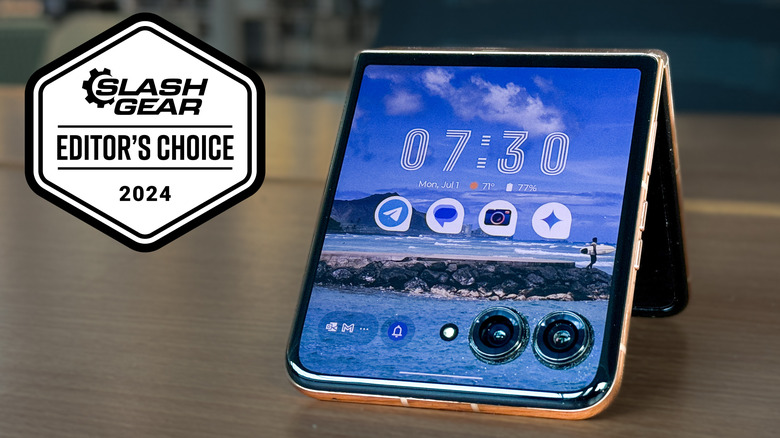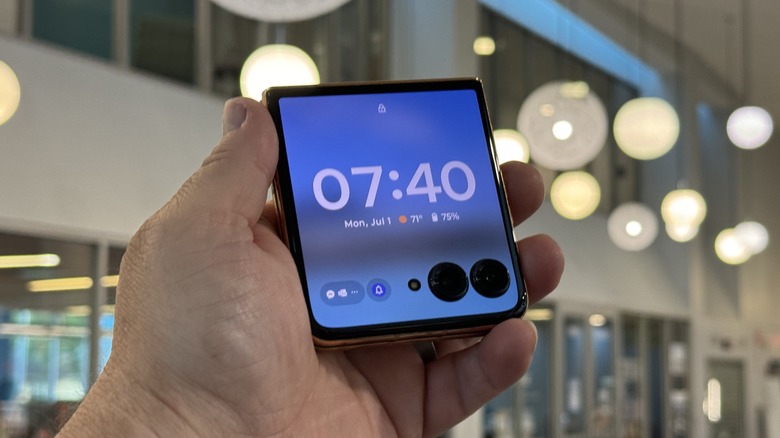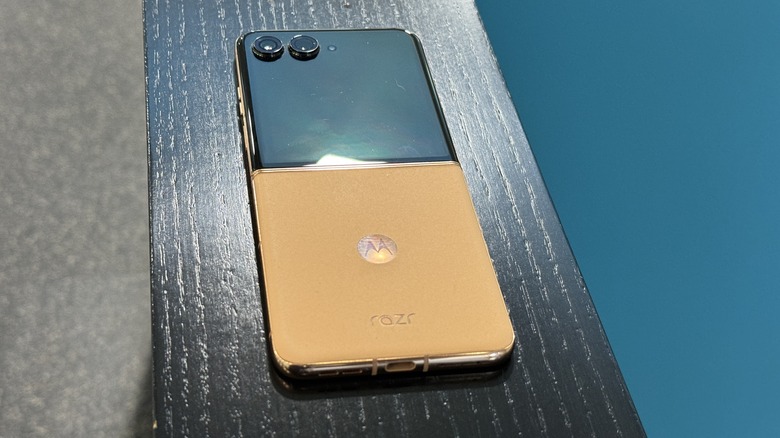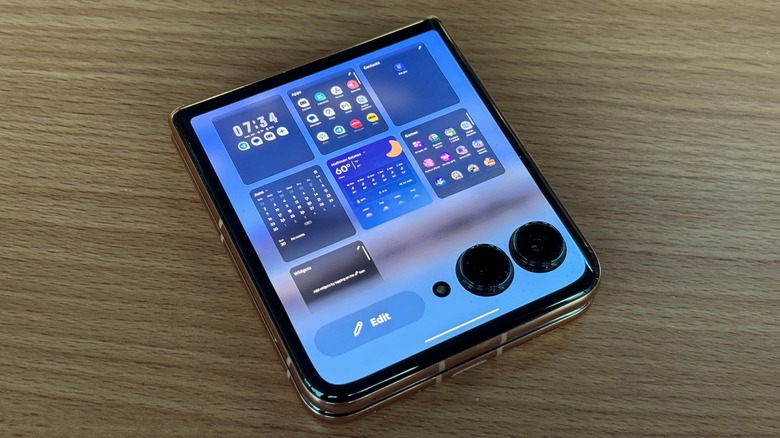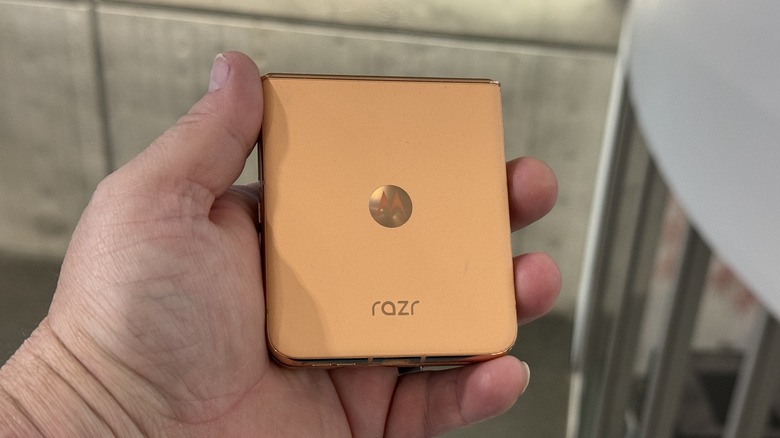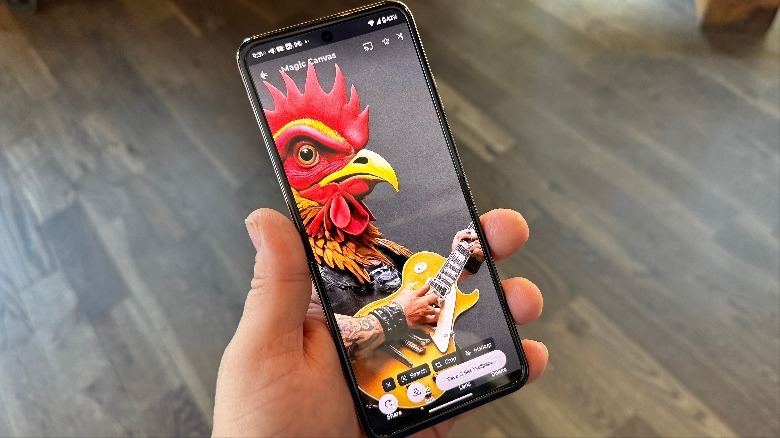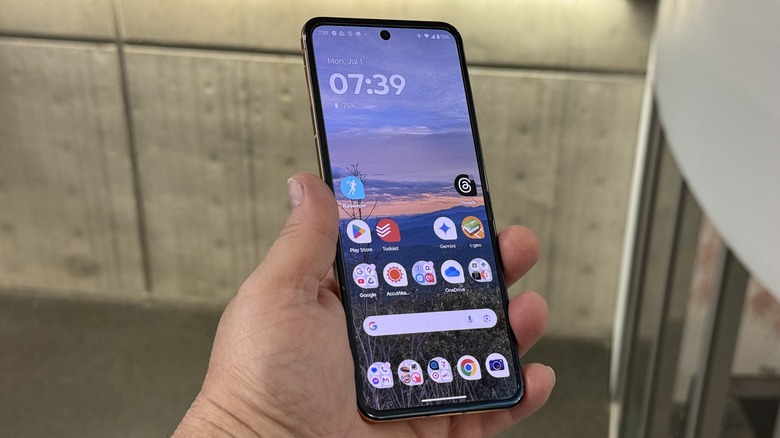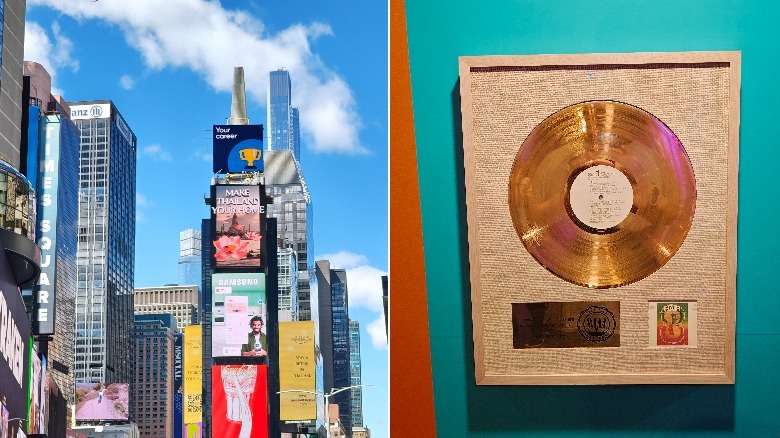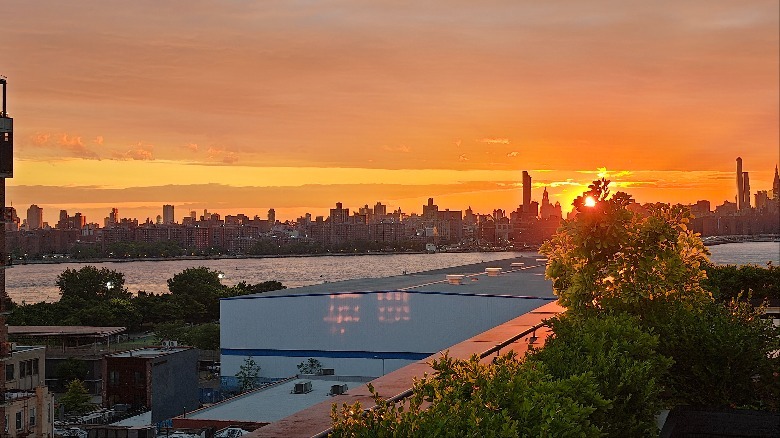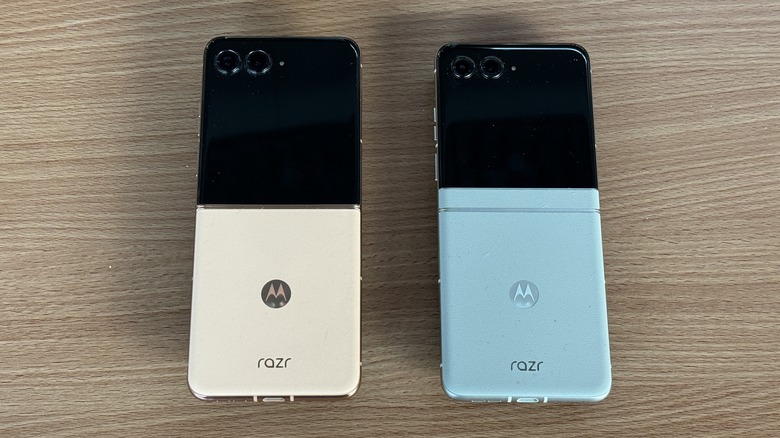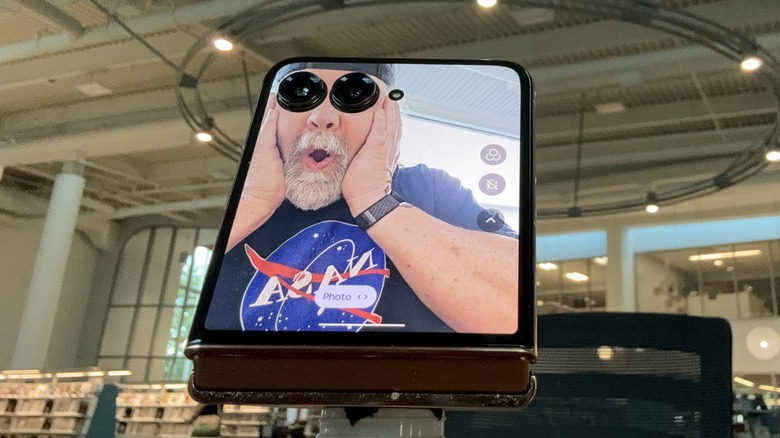Motorola Razr+ (2024) Review: New Screen And Old Price Makes The Decision Simple
- Palatial cover screen
- Better Software
- Improved cameras
- Solid Battery life
- Nighttime video is not useable
- Questionable fingerprint sensor compatibility with third-party apps
Disclosure: The writer of this article worked independently with Motorola on pre-production units of the Moto Razr and Razr Plus. This separate SlashGear review is based on production unit hardware and is done solely at the behest of SlashGear.
Last year, Motorola made one of my favorite phones of the year, the Moto Razr (2023). The flip-style foldable got almost everything right and was extremely fun to use. It was the phone that taught me the value proposition of foldable phones: As it turns out, foldables are better if you can do mostly everything on the outside screen, and open it as little as possible. If that sounds a little ridiculous, trust me, that's not lost on me.
This year, Motorola has launched the Razr+ (2024) and the Razr (2024) and both are significant improvements over their predecessors. Put simply, these phones feel like where Motorola should have started in the first place. That's not a bad thing. It just means Motorola is leading the pack from a position of strength. I've been using the Motorola Razr+ for the past 10 days; here's how Moto made it better.
On the outside
The first thing Motorola did right on the Razr+ was to increase the size of the exterior screen, so it takes up the entire face of the phone when it's closed. The back of the phone is covered with either vegan leather, vegan suede, or in one case a combination of both. My review device is the Peach Fuzz colorway from the Pantone color of the year in 2024. Though not real hide, the suede is absolutely lovely and the rest of the color is quite attractive.
Shifting once again to the front of the phone, like last year's Razr plus, the screen is broken up only by the two camera lenses. This year, those camera lenses are quite a bit more prominent — a full two millimeters on top of the glass, which can be distracting when trying to swipe on the cover screen. As it turns out, the cameras on the Razr+ are improved over last year, so it's a decent trade-off.
Upgraded inside
For 2024, Motorola has upgraded the processor with Qualcomm's latest Snapdragon 8S Gen 3: Not quite the best processor out there, but a tiny step down from it. Along with that, there's 12GB of RAM and 256GB and a 4,000 mAh battery, which is larger than last year's. It all fits in a very similarly-sized chassis, however, with a new hinge mechanism which reduces the size of the crease in the screen. It's still there, and you can still see it, but it's much less noticeable than most other foldables on the market.
Like last year, you can position the top half of the Razr+ at about any angle you want between 45 degrees and 135 degrees. The hinge itself feels a bit more refined, less springy and with more consistent resistance when opening and closing.
The fingerprint sensor is embedded in the power key on the side, which can also be enabled for swipe gestures to open the notification shade (or zoom in and out on a map). The fingerprint sensor is fast and accurate, but there seems to be an issue with third-party applications. Specifically, authenticating for 1Password rarely, if ever, worked. This is the first phone I've had issues like this, so it's hard to determine if this is specifically an issue with the phone, or the sensor, or the app which also got a pretty big update in the last few weeks.
Software updates
Meanwhile, the software has gotten plenty of updates as well. Motorola is still using the same panel scheme as before, but this year added a critical widgets panel. You can pinch two fingers to see an overview of your panels and tap on any of them to jump to it. Meanwhile, the same gesture allows you to edit your panels without having to go to settings. Motorola also added Always-On display to the phone, which was sorely missed last year.
As was the case with the old Razr+, you can set almost all your apps to work on the exterior screen; and, like last year, not every app works as well as you'd like. Still, this is a much better approach to the external screen than Samsung's, which makes you jump through hoops to get non-standard apps on the external display. Motorola prefers to give the user agency to handle their own app drawer, and I for one appreciate it.
AI Inside
It's 2024, so we can't review a phone without talking about the artificial intelligence features built in. For the Razr+ AI is most notable in wallpapers. Specifically, Motorola added Style Sync and Magic Canvas. Style sync allows you to take a photo of your outfit (or anything, really) and generate a phone wallpaper based on the colors and patterns of your outfit. Magic Canvas is much more akin to the image generation tools you're familiar with from other AI models. Type in "Heavy metal chicken playing guitar" and let the phone generate that wallpaper.
Meanwhile, Gemini is accessible from the cover screen, which isn't a drastic change from last year — you could still access Google Assistant from the cover screen last year. The difference this year comes in the Gemini app running on the external display and giving you an actual user interface. Last year, you got a prompt indicating that you were talking to the Google Assistant, but after it responded, the UI disappeared.
In the future, Motorola plans to roll out Moto assistant which it says will do all sorts of cool AI things like summaries and remembering contacts for you. Without testing, I can't really say how well they'll work or how useful they'll turn out to be.
Performance and battery
As mentioned, the Snapdragon 8S Gen 3 is not the flagship professor from Qualcomm, but it's not that large a step back. Day-to-day tasks run perfectly fine. There's no stutter, lag, or dropped frames to be found. Gaming on the phone is also very solid: Even titles like "Genshin Impact" and "Call of Duty: Mobile" perform very well at the default settings. Geekbench returns respectable 1,264 and 3,940 Single and Multi-core scores.
As for battery, that's a tale of two use cases — neither of them are bad, though. When you use the phone open most of the time, you can easily get through the day on a single charge. It definitely fits the "all-day" battery life description. If you use the phone closed most of the time, your battery life will be much better. On a full day out and about off of Wi-Fi, but also using the phone closed for mostly everything, my battery dropped by barely 25% as of 4:30 p.m. If you are liberal with your external display use (which you should be) you should have no battery problems at all.
Very good cameras...finally!
The cameras on the 2024 Razr+ are much improved over last year — with a caveat. Moto packs two 50-megapixel sensors on the phone. One of them is a normal lens; the second is a 2x telephoto lens. What's missing is an ultrawide sensor. The last time a major phone shipped without an ultrawide camera sensor was the Pixel 4. It's fair to call this decision controversial, though personally, I don't have a problem with it. I much prefer telephoto sensors. That doesn't make its exclusion less weird, though.
Daytime performance, as per usual, is great. Colors are vibrant and crisp and there's virtually no difference between the colors on the various sensors. When things get darker, camera performance suffers to be sure, but not by much. It would be more fair to say that photographic results become less consistent. Moving subjects are still a dumpster fire, but if your subjects are still, like the shots I took at the Broadway Museum in New York City, they're still quite respectable.
Video, meanwhile is pretty good during the day, but drops off sharply at night, with the usual judder with footsteps, blown out light sources, and lacking ability to focus. But low light photos are much better than they have been on previous Motorola phones, and that's a huge win.
Differences between Razr+ and Razr
Since the Motorola Razr+ and Razr are shipping on the same date, you might wonder which one to get. There's a $300 difference between them, and there are a few reasons why.
Last year's Razr (2023) had a tiny external screen, but never really gave a reason why. This year's Razr (not plus) adopts last year's Razr+ screen. It's still smaller than the Razr+ (2024), but not by much. Instead of the Qualcomm processor, the Razr gets a MediaTek 7300X. The performance drop off is noticeable, but the Razr still performs decently well.
The Razr loses the AI features of the Razr+, which is most notable in the camera. The Razr+ uses AI to automatically process photos and clean them up, and that makes a pretty big difference in the final shots. Both phones have an identical 50-megapixel sensor, but the AI post-processing makes a pretty big difference, which is why camera quality on the Razr takes a big hit compared to its flagship cousin.
One advantage that the Razr has is the inclusion of an ultrawide sensor, so if you're one of those who will miss the sensor, you might want to consider the cheaper phone. Personally, I think the tradeoff is pretty big for a single sensor, but your mileage may vary. It comes down to the difference between a good flagship camera and a good midrange camera — which is a pretty big difference, although with good lighting the difference is even narrower.
Motorola Razr plus price, availability and verdict.
The Motorola Razr and Razr+ are both available to preorder starting on July 10 at T-Mobile, AT&T and at Motorola.com, Amazon.com, and Best Buy. The Razr+ (2024) will be priced the same as last year at $999. Meanwhile the Motorola Razr will go on presale at T-Mobile on July 10th, and will be available unlocked from Motorola.com, Amazon, and Best Buy on July 24 for $699.
Put simply, the Motorola Razr+ stands a good chance of being my favorite flip-style phone this year, too. The improvements in the camera and cover screen are huge, and really make this foldable feel complete and ready for the masses. If rumors about Samsung's Flip 6 ambitions are true, the Razr+ will still have a larger external cover screen than its Galaxy rival. Size isn't everything but, by addressing most of the concerns from last year, Motorola has not only made a foldable that works as successfully closed as it does open, but a contender for best Android device of 2024.
